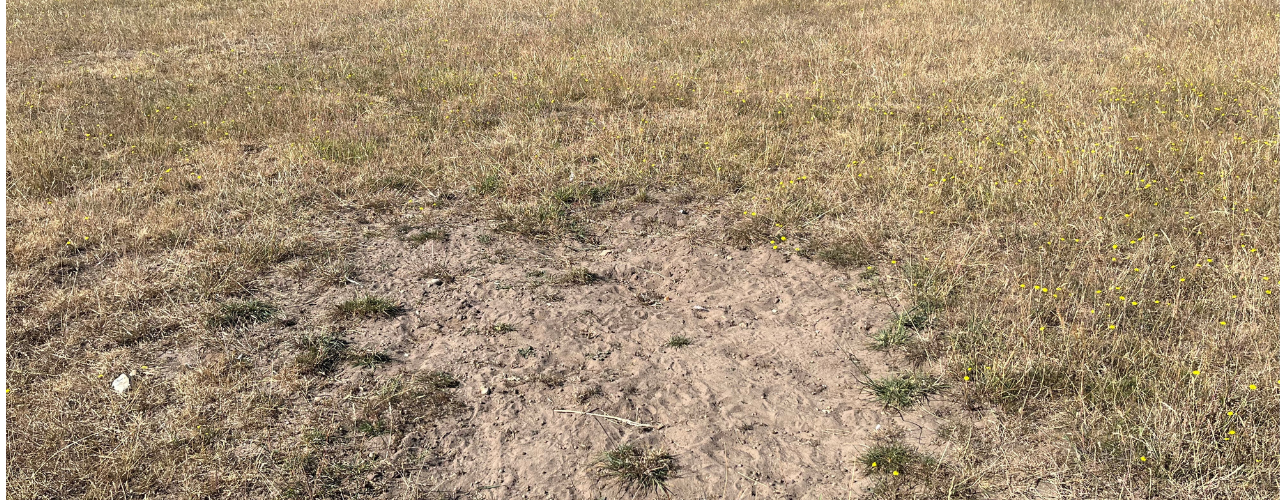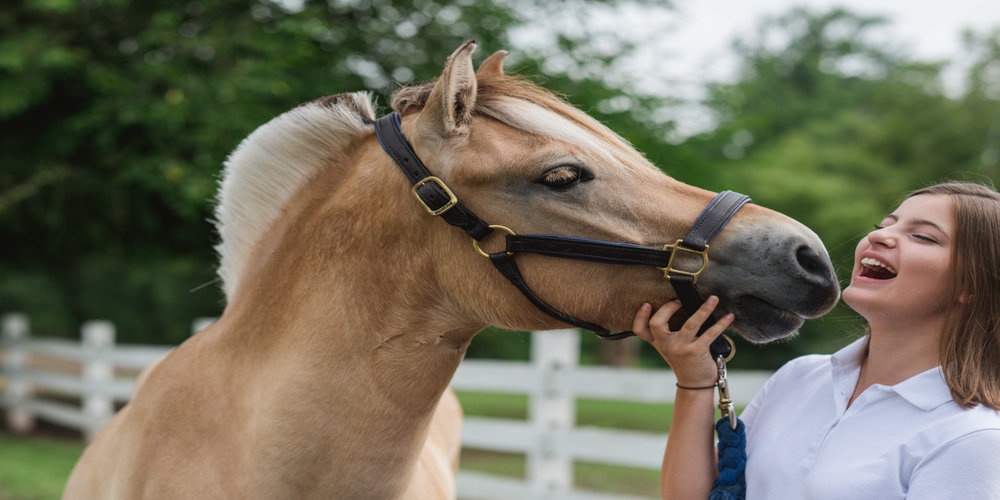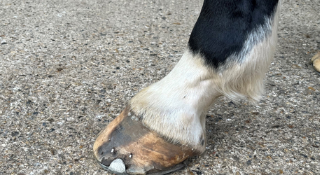
Be sand colic savvy
Keeping your horses on light sandy soil can mean less mud in the winter and easier paddock maintenance come the spring but with it...
13 July 2022
Read More
Has your horse suddenly started behaving like a heavy metal music fan, shaking his head like a Deep Purple devotee whenever you ride? If so it is possible that he’s suffering from headshaking – a frustrating and distressing condition for both horse and rider, not least because it’s notoriously difficult to establish a cause and find a successful treatment.
What is headshaking?
The term headshaking has been used as a loose descriptive term encompassing any horse that shakes its head, for any reason. For some horses this may be a painful or behavioural response to an unpleasant stimuli such as badly fitting tack, flies, a foreign body in the nose or even neck or back pain. However, for the vast majority of horses headshaking is now understood to be a manifestation of some form of facial pain. Sometimes the cause of pain can be identified, for example a tooth or sinus infection; however, in a large number of horses physical changes cannot be found and these are the ones we classify as idiopathic headshakers.
For most of these horses headshaking behavior is thought to be due to pain in the trigeminal nerve, a syndrome now most correctly known as ‘trigeminal-mediated headshaking’. This is a very distressing and difficult condition which can result in the horse becoming unrideable or in severe cases resulting in euthanasia on humane grounds.
Whilst headshaking from an underlying cause may be in any direction, the headshaking seen in trigeminal-mediated headshaking is often very characteristic with repetitive and apparently involuntary vertical movements of the head, which may become dangerous. The horse may try to rub its face, strike at the nose with a foreleg or attempt to hide the nose. It may be accompanied by snorting and nasal discharge. While some signs may be displayed when the horse is at rest, the condition usually becomes most apparent during exercise. The signs may be intermittent or persistent, seasonal or non-seasonal. It is very upsetting for the horse and for everyone involved in its care.
What causes headshaking?
Identifiable causes of headshaking behaviour include anything that causes pain and irritation to the face (particularly the teeth and sinuses) or even the neck, back and in rare cases lameness. It is important to thoroughly rule out and treat any underlying cause early in the disease process. Unfortunately, in many cases a cause cannot be identified and a diagnosis of idiopathic headshaking is made.
Over the years there have been many theories as to why idiopathic headshaking occurs but recent work has helped advance our understanding of this condition:
Recent research has determined that for many idiopathic headshakers there is sensitisation of the branches of the main nerve (trigeminal nerve) transmitting sensory information (heat, pressure, and touch) from the horse’s face to the brain. The result is a normally innocuous stimuli such as wind on the face is perceived by the affected horse as a sharp, unremitting pain. This theory is supported by the finding that using a local anaesthetic injected around the trigeminal nerve can temporarily relieve symptoms of headshaking and that the stimulus required for the trigeminal nerve to respond has been found to be lower in affected horses.
It’s been suggested that equine herpes virus or other viral agents may cause damage to the trigeminal nerve, however recent work has found no evidence of structural changes in the nerve to support this long held suspicion.
Due to the typical seasonal appearance of headshaking, it has long been thought that allergy is the cause of headshaking. Whilst some horses may suffer from true allergy causing them to headshake, anti-allergy medications such as corticosteroids and antihistamines are frequently ineffective at relieving signs of headshaking. This suggests that whilst pollen and dust may play a role in the syndrome it is likely to be more complicated than a straightforward allergic response.
It frequently noted headshakers are worse at exercise. This may occur as part of the trigeminal-mediated syndrome where wind flow in the nostrils or perhaps the changes in blood flow which occur with exercise, cause pain in an already sensitised nerve.
Bright sunlight can be a trigger for headshaking behaviour ,which could explain why there are higher incidences of headshaking in the summer. It is thought this may occur as the light indirectly increases the sensory input to an already sensitised nerve.
Careful observation of the circumstances in which symptoms occur in an individual horse can help your vet to identify their individual trigger factors and determine the best therapeutic approach.
How can I help my headshaker?
It is important to work with your vet, firstly to determine if there is pain and if so does it arise from the face or from elsewhere in the body? Once this is determined work can begin to establish if there is an underlying cause for facial pain (using physical and oral examination, radiographs, nerve blocks, endoscopy, response to therapy, or even CT) or if trigeminal-mediated headshaking is likely. Whatever the cause, treatment will involve trial and error in a logical order and a serious amount of commitment is often required. Your vet may suggest any or all of the following:
Nose nets can be effective in some cases as they reduce nasal irritation from dust, pollen and insects. In addition they may help trigeminally-mediated headshakers as the constant light pressure on the face overrides the painful stimulus in the sensitised nerve (this is similar to rubbing your elbow to soothe it after hitting it).
A new environment can sometimes cause headshaking to reduce or stop such as moving from an inland yard to one at a higher altitude or with a sea breeze.
Seasonal sensitivities are shown in some horses. They may display symptoms of headshaking in warm, sunny weather but may improve on cool days and over the winter. While it’s by no means ideal for busy horse owners, timing your riding to suit your horse’s particular sensitivities can save frustration for you both.
Pharmacological intervention can be useful as a diagnostic and in some cases a therapeutic aid. Corticosteroids, antihistamines, anti-inflammatories and drugs aimed at reducing nerve pain have all been used and can provide some horses with relief, if only temporarily.
EquiPens is a recently available therapy based on treatment of nerve pain in human patients. It involves the application of a specially designed probe under the skin over the nerve which delivers a non-painful stimulus. The procedure is applied three or more times to induce remission and is now available for horses at a number of clinics in the UK.
Caudal compression surgery aims to reduce the input to the trigeminal nerve by damaging one of its branches in a controlled way. It can be used to treat horses with trigeminal-mediated headshaking and has been stated to be 63% effective long term. However there can be serious side-effects so it is important to discuss this treatment carefully with your vet and consider other less invasive options first.
As frustrating as it is it’s important to remember that if your horse is an idiopathic headshaker he’s not being naughty and he’s not being evasive, he’s simply irritated and likely to be in pain. Your vet will be able to advise you on the best treatment plan to help alleviate the symptoms as best you can.
Did you know...
There is hope for headshakers…..Langford Veterinary Services at the University of Bristol is working on ways to adapt and improve treatment for headshakers and the finding that trigeminal-mediated headshaking is due to nerve sensitization rather than structural nerve damage raises the hope that in some horses this process may be reversible.
References
http://www.worldhorsewelfare.org/Headshaking
http://www.horseandhound.co.uk/horse-care/vet-advice/understanding-headshaking-36900
Roberts (2018) Managing headshaking in practice: an update. In Practice May 2018 | Volume 40 | 157-161

Keeping your horses on light sandy soil can mean less mud in the winter and easier paddock maintenance come the spring but with it...
13 July 2022
Read More
The fetlock is a hard-working, high motion hinge joint. It is the meeting point of the cannon bone, proximal sesamoid bones and th...
20 June 2022
Read More